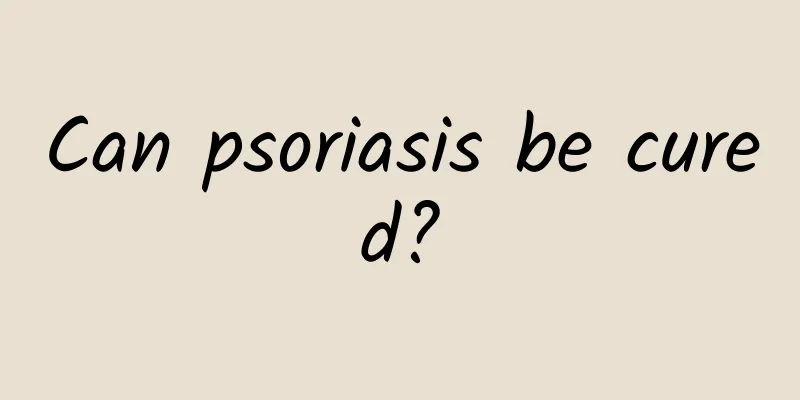Common diseases caused by trace element deficiency

|
Although the content of trace elements in the human body is very small, they play a very important role. If there is a lack of certain trace elements, it will cause physical abnormalities. For example, lack of calcium will lead to bone maldevelopment, weakness of the limbs and short stature. Lack of iron will make the blood unable to regenerate and cause symptoms of anemia. Therefore, everyone should be aware of the common diseases caused by lack of trace elements. What diseases can be caused by the increase or deficiency of common trace elements? Copper: Copper is the main raw material for many enzymes. Children and adolescents who are copper deficient will have symptoms such as pale complexion, long-term diarrhea, mental retardation, and dry hair. Excessive copper intake can cause acute copper poisoning, manifested by abdominal pain, vomiting, diarrhea, dizziness, and coma. Iron: Iron is necessary for the exchange and transportation of oxygen in the blood and is an indispensable element for hematopoietic function. Iron deficiency most commonly causes iron deficiency anemia in children and adolescents. High serum iron levels can be seen in pernicious anemia, thalassemia, etc., and can also increase the risk of heart disease and cause iron poisoning. Calcium: Calcium is the main component of human bone marrow and teeth. Children are prone to rickets if they suffer from long-term calcium deficiency. The elderly are prone to osteoporosis. Too much calcium content will cause a burden on the heart, and if large amounts of calcium are supplemented intravenously, it can even lead to death. Zinc: Zinc is an important carrier in blood circulation and promotes the metabolism of vitamin A. Zinc deficiency affects the growth and development of children and adolescents, leading to decreased appetite, decreased intelligence, and eating foreign objects, such as eating fingers, pencils, erasers, etc. Excessive zinc will inhibit the utilization of iron, causing iron to participate in the hematopoietic mechanism to be impaired, thereby causing the human body to develop refractory iron deficiency anemia. Cadmium: It is a trace element that is harmful to the human body. Excessive intake of cadmium will affect the functions of other beneficial elements in the body, causing liver and kidney damage, emphysema, endocrine disorders, loss of appetite, insomnia, etc. The cadmium content in the urine of patients with hypertension is 40% higher than normal. In addition, cadmium is also a carcinogen and can induce prostate cancer. Lead: Excessive intake can cause behavioral and nervous system abnormalities, inhibit phagocytosis, and reduce resistance. Lead poisoning can cause abdominal pain, hepatitis, paralysis, indigestion, vomiting, pale complexion, irritability, cold sweats, inhibit hemoglobin synthesis, cause anemia, kidney damage, proteinuria, casts, and a decline in overall intelligence and sensory integration. Magnesium: Magnesium is an important source of various enzymes in the human body. People who lack magnesium will feel mentally exhausted, pale and thin, have rough skin, and even emotionally unstable, with trembling muscles in the face and limbs. Especially if young girls show the above symptoms, they should check whether their magnesium levels are normal. High levels can cause hypermagnesemia. Manganese: Manganese is an essential trace element in the human body and plays an important role in human health. Manganese deficiency can cause neurasthenia syndrome and affect intellectual development. It will also lead to a decrease in insulin synthesis and secretion, affecting sugar metabolism. Increased levels can cause manganese poisoning, and in severe cases can cause degeneration of renal tubular epithelial cells, fatty degeneration of the liver, etc. Cadmium and lead are non-essential trace elements that are harmful to the human body. The lower the content in the human body, the better. The important role of trace elements in the human body is increasingly recognized and valued. The impact of their deficiency on the growth and development of children and the nutritional health guidance for the elderly are particularly important. |
<<: Treatment of sebaceous membrane inflammation with traditional Chinese medicine
>>: How to take Panax notoginseng powder for good effect
Recommend
What are the Chinese patent medicines for strengthening the spleen and removing dampness?
Chinese patent medicine generally refers to medic...
Is tetanus contagious?
Everyone must have heard of some incidents where ...
Can I drink Astragalus extract for a long time?
Nowadays, everyone pays more attention to health ...
What causes itchy tear glands?
The lacrimal gland is an important part of our bo...
What causes lower abdominal pain in women?
Lower abdominal pain usually occurs in women. The...
Why does female urine turn yellow? what to do?
Yellow urine refers to the color of urine being y...
Are pancreatic masses benign?
Pancreatic space-occupying units can also be beni...
Is localized scleroderma treated well by traditional Chinese medicine?
I don’t know if you have heard of the disease cal...
Symptoms of fatty liver in the elderly
Living conditions are getting better and better n...
What is the reason for difficulty in defecation?
Defecation is actually a very comfortable thing f...
Why does my waist and stomach hurt?
Whether it is for normal people or pregnant women...
What foods should not be eaten when suffering from urticaria
Urticaria is an allergic skin disease, most of wh...
Where should intravenous anesthesia be given?
Anesthesia is a necessary preoperative step for s...
Symptoms of excessive liver fire
Excessive liver fire is what we call it in tradit...
How to treat seborrheic alopecia? Common treatments for seborrheic alopecia
If you suffer from seborrheic alopecia, we can un...









